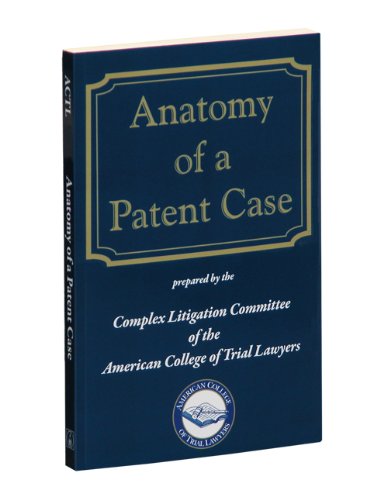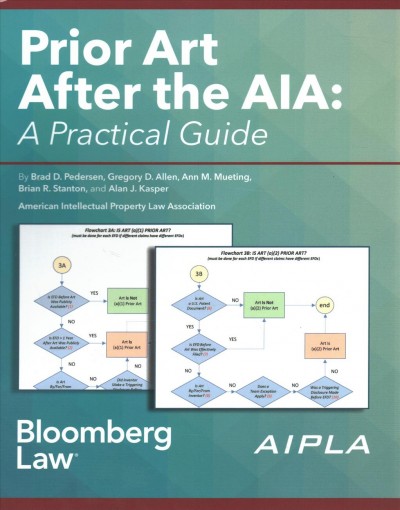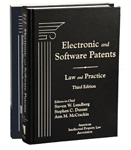AIPLA Bloomberg BNA Books
AIPLA Books Co-Published with Bloomberg BNA IP Books!
AIPLA has co-published these books through our partnership with the book division of Bloomberg BNA.
 , by Jeffrey I. D. Lewis, Steven B. Garland, Jamie-Lynn Kraft. The book focuses on the law of privileged communications in various jurisdictions, including both common law and civil law jurisdictions such as the United States, Canada, the United Kingdom, Australia, and numerous jurisdictions in Europe and Asia. The book looks at what types of communications may be the subject of protection against forced disclosure and the basis for such protection in the various jurisdictions of interest (e.g., common law solicitor/client privilege, civil law principle of professional secrecy), but also considers the means by which any such privilege may be maintained and/or lost. In addition to providing a review of the domestic law on the subject in the various jurisdictions, the book considers cross-border communication situations that may lead to the inadvertent waiver or loss of privilege and steps that can be taken to try and lessen the risks of any such potential loss. The book considers relevant issues of privileged communications from both the perspective of outside and in-house counsel. Also covered are current international initiatives being considered at the World Intellectual Property Organization and elsewhere to provide a harmonized approach to protection of privileged communications. The book is not limited to issues specific to intellectual property, although it considers the situation from the perspective of intellectual property rights owners and their IP counsel.
, by Jeffrey I. D. Lewis, Steven B. Garland, Jamie-Lynn Kraft. The book focuses on the law of privileged communications in various jurisdictions, including both common law and civil law jurisdictions such as the United States, Canada, the United Kingdom, Australia, and numerous jurisdictions in Europe and Asia. The book looks at what types of communications may be the subject of protection against forced disclosure and the basis for such protection in the various jurisdictions of interest (e.g., common law solicitor/client privilege, civil law principle of professional secrecy), but also considers the means by which any such privilege may be maintained and/or lost. In addition to providing a review of the domestic law on the subject in the various jurisdictions, the book considers cross-border communication situations that may lead to the inadvertent waiver or loss of privilege and steps that can be taken to try and lessen the risks of any such potential loss. The book considers relevant issues of privileged communications from both the perspective of outside and in-house counsel. Also covered are current international initiatives being considered at the World Intellectual Property Organization and elsewhere to provide a harmonized approach to protection of privileged communications. The book is not limited to issues specific to intellectual property, although it considers the situation from the perspective of intellectual property rights owners and their IP counsel.

, by Elizabeth D. Ferrill, editor-in-chief, Sydney N. English; Stacy Lewis. The treatise covers fundamental principles of design law, setting forth the basic principles and noting where similar concepts exist in the different countries but use different terms; global design law, starting with an overview of the relevant international treatises, then country-specific chapters for China, the European Union, Japan, South Korea, the United Kingdom, and the United States, each of which follow the same outline to facilitate comparison between the chapters; and strategies and considerations for global design protection, focusing on prosecution/acquisition strategies for design rights on a global scale and discussing coordination of enforcement/litigation of design rights in multiple countries. Each country-specific chapter includes an example case study of the same article (a blender) to illustrate the differences between the drawing requirements, statistics about design filings (timing, number of filings), and litigation (number of cases, decision outcomes) among the countries covered"-- Provided by publisher.

, Prepared by the Complex Litigation Committee of the American College of Trial Lawyers. Anatomy of a Patent Case was conceived and published as a simple handbook for the conduct of a patent case: a short and concise guide that both practitioners and the judiciary would find useful and easily accessible. Inspired by the comments of the late Judge Mike King, to whom this edition is dedicated, the original editors—George Pappas, John Cooper, and Morgan Chu—wrestled with the issues and problems that are unique to patent cases and stripped from the draft any generalized discussion of procedural or evidentiary issues that were not focused on what makes patent litigation different from other litigation. They thereby developed a relatively short and streamlined guide, which was published in 2009. That edition, and all later editions, have been published jointly by Bloomberg Law and the Federal Judicial Center and have been distributed to all United States district judges and made available for sale to interested lawyers.
 Patents After the AIA: Evolving Law and Practice (2018) AN INNOVATIVE TREATISE on tactical and strategic patent decisions for today s patent professionals. This comprehensive treatise provides a self-contained, single volume desk-reference and guide to tactical and strategic patenting decisions for patent professionals after the most comprehensive revision to U.S. patent law since 1952, the America Invents Act (AIA). The AIA fundamentally altered U.S. patent law by transitioning from a First-to-Invent to a First-Inventor-to-File patent system. The pragmatic style of Patents After the AIA: Evolving Law and Practice provides insights and advice for patent application preparation and filing, post-issuance review and challenges to patentability, and ongoing international patent law harmonization. It also provides historical and legislative discussions and practical foundational discourses. Patents After the AIA: Evolving Law and Practice includes the following unique content: More than 350 Practice Tips to highlight key points and serve as warnings and guideposts to the patent professional More than 100 original graphical timeline scenarios provides a myriad of different fact patterns analyzed under the AIA and compared to pre-AIA outcomes In-depth analysis and policy discussions explain complex changes to the law A glossary of more than 400 terms and phrases with concise definitions and descriptions, which enhances the precision and consistency of patent law discussions regarding the intent, implementation, and impact of the AIA, addresses the existing lack of clear terms and phrases that capture the fundamental changes to U.S. patent law encompassed by the AIA Thousands of footnotes provide support for the treatise and serve as easy references for the reader to find the source materials discussed, including U.S. patent-related statutes, legislation, case law, and U.S. Patent and Trademark Office (USPTO) practice guidance (e.g., guidelines, regulations, and policies), giving the patent professional direct reference to the statutory, judicial, regulatory, and policy standards relevant to the issues which patent professionals encounter on a day-to-day basis. Key documents are provided in an online appendix. Each chapter includes descriptive titles and headings reflecting information content. This organization helps readers readily access specific topics within a chapter to access issues of immediate interest. Extensive cross-references are provided to related sections of the treatise that provide greater depth of discussion.
Patents After the AIA: Evolving Law and Practice (2018) AN INNOVATIVE TREATISE on tactical and strategic patent decisions for today s patent professionals. This comprehensive treatise provides a self-contained, single volume desk-reference and guide to tactical and strategic patenting decisions for patent professionals after the most comprehensive revision to U.S. patent law since 1952, the America Invents Act (AIA). The AIA fundamentally altered U.S. patent law by transitioning from a First-to-Invent to a First-Inventor-to-File patent system. The pragmatic style of Patents After the AIA: Evolving Law and Practice provides insights and advice for patent application preparation and filing, post-issuance review and challenges to patentability, and ongoing international patent law harmonization. It also provides historical and legislative discussions and practical foundational discourses. Patents After the AIA: Evolving Law and Practice includes the following unique content: More than 350 Practice Tips to highlight key points and serve as warnings and guideposts to the patent professional More than 100 original graphical timeline scenarios provides a myriad of different fact patterns analyzed under the AIA and compared to pre-AIA outcomes In-depth analysis and policy discussions explain complex changes to the law A glossary of more than 400 terms and phrases with concise definitions and descriptions, which enhances the precision and consistency of patent law discussions regarding the intent, implementation, and impact of the AIA, addresses the existing lack of clear terms and phrases that capture the fundamental changes to U.S. patent law encompassed by the AIA Thousands of footnotes provide support for the treatise and serve as easy references for the reader to find the source materials discussed, including U.S. patent-related statutes, legislation, case law, and U.S. Patent and Trademark Office (USPTO) practice guidance (e.g., guidelines, regulations, and policies), giving the patent professional direct reference to the statutory, judicial, regulatory, and policy standards relevant to the issues which patent professionals encounter on a day-to-day basis. Key documents are provided in an online appendix. Each chapter includes descriptive titles and headings reflecting information content. This organization helps readers readily access specific topics within a chapter to access issues of immediate interest. Extensive cross-references are provided to related sections of the treatise that provide greater depth of discussion.
Limited hard copies available by contacting AIPLA at aipla@aipla.org or 703.415.0780.
 is a comprehensive treatise that provides a self-contained, single volume desk-reference and guide to tactical and strategic patenting decisions for patent professionals after the most comprehensive revision to U.S. patent law since 1952, the America Invents Act (AIA). The AIA fundamentally altered U.S. patent law by transitioning from a “First-to-Invent” to a “First-Inventor-to-File” patent system. The pragmatic style of Patents After the AIA: Evolving Law and Practice provides insights and advice for patent application preparation and filing, post-issuance review and challenges to patentability, and ongoing international patent law harmonization. It also provides historical and legislative discussions and practical foundational discourses.
is a comprehensive treatise that provides a self-contained, single volume desk-reference and guide to tactical and strategic patenting decisions for patent professionals after the most comprehensive revision to U.S. patent law since 1952, the America Invents Act (AIA). The AIA fundamentally altered U.S. patent law by transitioning from a “First-to-Invent” to a “First-Inventor-to-File” patent system. The pragmatic style of Patents After the AIA: Evolving Law and Practice provides insights and advice for patent application preparation and filing, post-issuance review and challenges to patentability, and ongoing international patent law harmonization. It also provides historical and legislative discussions and practical foundational discourses.
 , by Michael L. Drapkin (Editor). The new treatise provides patent professionals and engineers who work in the standards area a deeper understanding of the landscape and best patent practices related to the standards process. The book reviews the history, organizations, and policy considerations at the center of the standards area. It offers in-depth analysis and practical guidance for patent prosecution and patent portfolio development of standards-related technology along with an overview of the licensing, antitrust, and litigation issues related to standard-essential patents.
, by Michael L. Drapkin (Editor). The new treatise provides patent professionals and engineers who work in the standards area a deeper understanding of the landscape and best patent practices related to the standards process. The book reviews the history, organizations, and policy considerations at the center of the standards area. It offers in-depth analysis and practical guidance for patent prosecution and patent portfolio development of standards-related technology along with an overview of the licensing, antitrust, and litigation issues related to standard-essential patents.

by Kenneth L. Dorsney (Author, Editor), Stephen R. Auten (Editor), Mark J. (Editor), Ph.D. Feldstein (Editor), Neil A. Benchell (Editor), Gregory S. Gewirtz (Editor). Patent evidence from filing to appeal in one handy comprehensive resource by some of the top patent litigators in the U.S. Success in patent litigation often turns on the ability or inability to admit or exclude evidence. Evidence in Patent Cases explains the use of evidence as it relates specifically to the issues encountered in patent litigation from case initiation through appeal. The authors, a team of experienced patent litigators, share insight, analysis, practice notes, and case citations, making this book very handy for litigators looking to object or overcome an objection with solid case law at their fingertips. The book s unique format is divided into two distinct parts. Part I provides case strategy and analysis in patent cases viewed through the lens of the evidence required to achieve the patent litigator s objective during each stage of litigation and appeal, giving the reader a comprehensive understanding of evidentiary issues as they arise in patent litigation. Part II provides the full text of each Federal Rule of Evidence, formatted for quick and easy location and reading, and the authors analyze each rule in the context of patent litigation, offers explanatory commentary, practice tips, and a collection of annotated case digests showing application of the rules to the facts of the patent case to give patent litigators a quick and easy reference to quickly find support for evidentiary positions during the heat of pre-trial, trial, and/or hearings involving the introduction of evidence.

, by American Intellectual Property Law Association (Author), David A. Einhorn (Editor). This book is the critical resource practitioners need to protect and enforce clients' IP rights as they relate to the Internet. The Second Edition of Intellectual Property Law in Cyberspace combined the talents and experience of a varied group of AIPLA member authors and the book’s originators Peter Albert and Rita Abbati Albert to revise and continue to update this excellent treatise. The Third Edition brings in some new authors and new perspectives along with returning authors, and it continues to deliver thoughtful analysis of important issues. Since the original publication of this text in 2000, we have experienced extraordinary evolution of intellectual property law relating to cyberspace. This rapid change in the law has been outpaced only by the seismic developments in the technology itself. It has been projected that cyberspace and Internet technologies have been, and will, continue to develop at an exponential rate. Finding ways for the law to continue to keep pace with these technologies will continue to create challenges for the courts, arbitration forums, legislatures, and the world legal and high-tech community.
, by Patrick J. Coyne. This is an indispensable guide for practitioners conducting or directing patent litigation in a foreign country. This looseleaf volume examines key topics for more than 33 countries and entities, such as rights of the patentee, activities that constitute infringement, modes of claim interpretation, courts, notices, pretrial procedures, types of remedies and defenses, and appeals. The 2017 Supplement includes revised chapters for Australia, Canada, China, France, Italy, Japan, New Zealand, and S. Korea.
 Post-Grant Patent Practice, Second Edition written by four former Administrative Patent Judges of the USPTO, is the patent professional’s essential guide to PTO post-issuance procedures, major changes to US patent law, and ways to address possible patent application mistakes. The new Second Edition includes:
Post-Grant Patent Practice, Second Edition written by four former Administrative Patent Judges of the USPTO, is the patent professional’s essential guide to PTO post-issuance procedures, major changes to US patent law, and ways to address possible patent application mistakes. The new Second Edition includes:
Limited hard copies available by contacting AIPLA at aipla@aipla.org or 703.415.0780.
- Analysis of post-grant review proceedings, including covered business method patent review and inter partes review under the AIA
- Key PTAB and federal court decisions relating to post-grant practices
- Significantly expanded discussion of AIA statutes and final regulations
- Revised tables and appendices including the AIA, statutes, and regulations governing post-grant practices

Electronic and Software Patents: Law and Practice, Third Edition is a strategy guide that helps practitioners deal with technological developments, changes in USPTO policy, and pivotal court rulings. The new 2014 Cumulative Supplement discusses:
- The Supreme Court’s review of Alice Corp. Pty. Ltd. v. CLS Bank Int’l
- Analysis of Supreme Court decisions in Akamai Technologies v. Limelight Networks and Nautilus, Inc. v. Biosig Instruments, Inc.
- USPTO-issued Guidance for “Claims Reciting or Involving Laws of Nature/Natural Principles, Natural Phenomena, and/or Natural Products”, and more
Limited hard copies available by contacting AIPLA at aipla@aipla.org or 703.415.0780.
